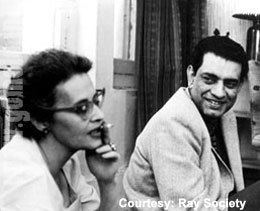Name Marie Seton | Role Actress | |
Died February 17, 1985, London, United Kingdom Spouse Donald Hesson (m. 1938–1942) Movies Time in the sun, Eisenstein - a Survey Film, Drawings that Walk and Talk Books Portrait of a director, Sergei M. Eisenstein, Paul Robeson, Song of the Atom Parents Marie Seton, Captain Seton Similar People Peter von Bagh, Grigori Aleksandrov, Sergei Eisenstein, Upton Sinclair - Jr, Mary Craig Sinclair | ||
Marie Seton (20 March 1910 – 17 February 1985) was an actress, art, theatre and film critic and biographer of Sergei Eisenstein, Paul Robeson, Jawaharlal Nehru, and Satyajit Ray.
Contents

Her father, Captain Seton served in the British Army in India and South Africa. After the death of Captain Seton, Marie's mother, also named Marie, remarried Sir Charles Walpole.
In 1935 Seton helped to establish the reputation of Jamaican sculptor Ronald Moody.
In 1936, she helped her friend C. L. R. James, the Trinidadian writer and radical political activist, to put on his play about the Haitian Revolution, Toussaint Louverture, which starred Paul Robeson in the title role, with the Stage Society.
Seton's reconstruction of Sergei Eisenstein’s projected epic, ¡Que viva México!, as a film released in 1939 entitled Time in the Sun, is considered by many critics as probably nearest to Eisenstein's concept because of her close relationship with the filmmaker.
She was a regular contributor to Sight and Sound and other publications.
In the late 1930s she became part of the circle of P. D. Ouspensky and later worked for him after his move to New York City.
Between 1938 and 1942 she was married to Donald Hesson, a Chicago lawyer and author.
According to her friend, Pamela Cullen, Seton "had a fascination for India and as a young woman she had been introduced to India’s fight for independence by one of India’s greatest political figures, Krishna Menon, who was then a struggling lawyer in London. She also had family associations with India through her father, who had served as an officer in the Indian Army and been seriously wounded during one of the many uprisings of the period".
Nehru invited Marie to India to help with the University Film Society and the Children's Film Society. She was probably recommended to him by D. G. Tendulkar, who must have known her during the time he was in Moscow studying cinema with Sergei Eisenstein. Over the years, Marie became a friend of Indira Gandhi. For some time in 1960s, Seton was a house guest of the Nehrus and stayed in Teen Murti.
Seton lived in India in the 1960s and 1970s and was actively involved in the film society movement, at the same time as being a close observer of Indian politics. She worked closely with Vijaya Mulay and Chidananda Dasgupta in establishing the Federation of Film Societies of India.
In recognition of her work, the Indian government honored Seton with the Padma Bhusan civilian award in 1984.
On her death, at her own request she was cremated, and the plaque of her ashes in Golders Green Crematotarium reads: "Marie Seton Hesson, Padma Bhushan, Citizen of the World".
Articles by Marie Seton
Articles on Marie Seton
Marie Seton—a tribute by Satish Bahadur. The Film Society Movement in India edited by H. N. Narahari Rao. Asian Film Foundation, Mumbai, India, 2009.
